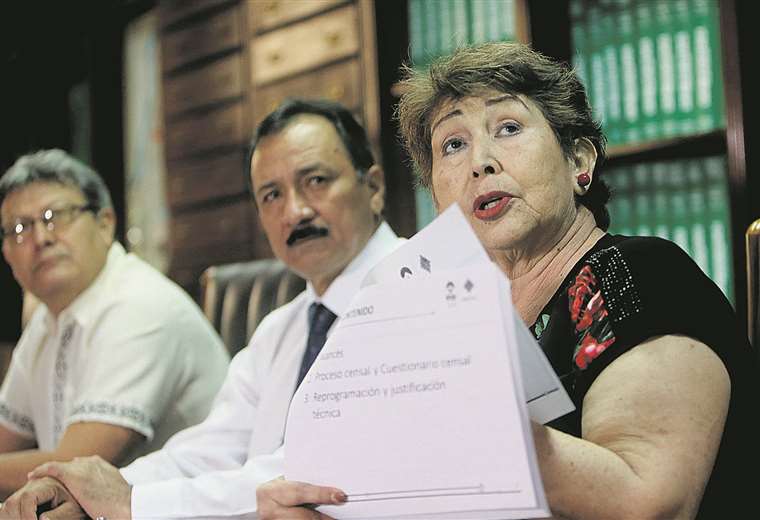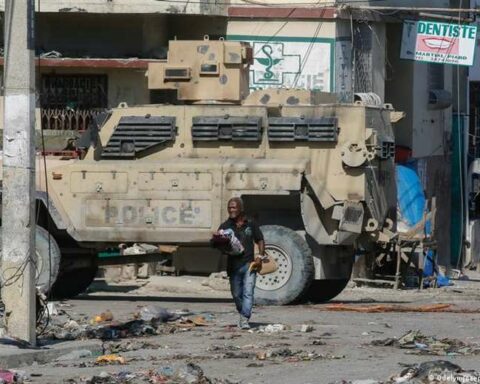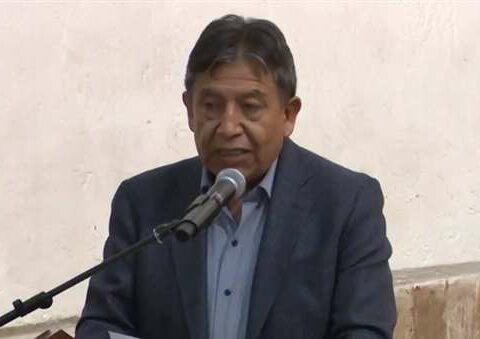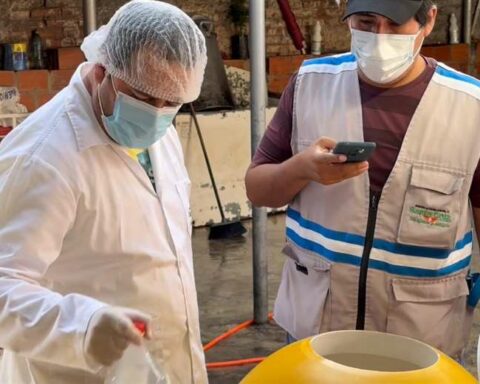October 7, 2022, 4:00 AM
October 7, 2022, 4:00 AM
The Gabriel René Moreno Autonomous University (Uagrm) yesterday defended the plan to carry out the census in 2023. It did so on the basis of an approach that is based on the technical analysis of the deadlines for each of the stages that must be met. According to the proposal, the first population results can be known three months after the great statistical operation.
This happened at a time when the Government and the National Institute of Statistics (INE) intensified a plan to show the “progress of the census”, but within the framework of Supreme Decree 4760, which established that the survey be carried out on a day, not yet defined. , May and June 2024. After three months of disagreements and a massive council, the Santa Cruz institutions are preparing for an indefinite strike that can be fulfilled within 15 days if the Government does not annul the questioned decree.
Indeed, there are two weeks left so that the extreme measure can also be avoided in this region.
Thus, Melvy Vargas, a demography specialist from the Uagrm who was part of the 2001 and 2012 census operations, considered that the Government incurred “in several contradictions” to carry out the survey and exposed the scope of the university’s proposal. “There is an entire analysis of the process and the graphic expression of this proposal is in the two sheets” with which the Government tried to delegitimize the plan.
Thus, considered it possible that the results of the national survey begin to be disclosed three months after the operation, Also known as “D-Day”. “You can start with the national population data and by departments; then the rest of the more specialized information,” he noted.
He further specified that Technological progress in recent years has made it possible to speed up “data capture” that are collected from each household where the census ballot is applied. “The tabulation by hand no longer exists,” he stressed and recalled that in the last two censuses the tasks were carried out in less time.
In 2001, for example, the official results were delivered in 10 months and in 2012 they were delivered in eight.. In the first case, the expert recalled, there was an extension of deadlines in favor of the training of enumerators, while 10 years ago, “there was no postponement despite problems in the databases.”
For this census —Vargas remarked— “the Government planned to deliver the results in 14 months”. That’s over a year. If the census is done between May and June 2024, the country will know the first population results in August 2025, two months before the 2025 general elections.
The first day of March 2024 is the viable date proposed by the University for the delivery of the results of the next census. They will be data on housing, population density, migration, health, education and access to services, among other key aspects.
Vargas arrived yesterday at EL DEBER together with the rector of the Uagrm, Vicente Cuéllar, and the economist Teófilo Caballero. They explained the scope of the proposal in the framework of a discussion organized by this newsroom. He was also invited Planning Minister Sergio Cusicanqui, but he excused himself from participating.
The expert explained that the University’s proposal establishes deadlines with rational times for each of the activities. The plan thus has four major stages. First, a set of actions to speed up cartographic updating with more personnel and technological means; Second, the pre-census phase is to be adjusted with simultaneous and coordinated activities.
Vargas recalled that the director of the INE, Humberto Arandia, currently on medical leave, announced this year that the cartographic update would be carried out in four months. He did it when Decree 4760 (July 13) did not yet exist, which he postponed for two years the survey, initially scheduled for November 16 this year. For this reason, the expert was struck by the fact that the INE has now given itself 18 months for this task, even taking into account the advances that have already been reported previously.
In addition, the INE reported on June 11 an advance of 23% in the cartographic update and announced that the process would be completed by the end of August. Minister Cusicanqui, on July 25, when questioned in the Legislative, delivered these projections and guaranteed the census in November. The experts from ‘la Gabriel’ then expressed their concern because there was no technical support from the INE to carry out the survey.
“The postponement was imminent, the times did not give the Government”, Cuéllar specified in the conversation. Furthermore, he remarked he, the Government did not provide any technical argument to postpone the census for two years. They never gave us that information,” he pointed out.
The director of the INE in Santa Cruz, Juan Sabino Quisbeth, stated that the cartographic update will be completed in the capital by February 2023. and for “the second semester” of next year throughout the department.
Vargas considered that the terms are “very long” and noted that so far there are no results from the dispersed or rural area. “Santa Cruz has advanced a little more than 30% in its cartographic update since July when the process began and that is barely a third. Progress is slow.”
Continuous. The census ballot is already designed, but the cognitive tests remain to establish if the questions are understood in each of the regions of the country. According to the progress that was reported until before the postponement of the census, a test of this nature has already been carried out. “Based on international recommendations, the process can be done in two months, but the INE has given itself 10 months for this stage,” he said.
Also recommended running, simultaneously, the segmentationa process by which a certain urban area is assigned to a census taker or a zone in the scattered rural area with the necessary geographical indications.
“If the cartography in Trinidad, Potosí, Cobija, Oruro and Potosí has already been completed, it is already possible to do the segmentation in those cities, but it is not being done and there is a gap,” said Melvy Vargas.
Also recommended speeding up the administrative procedures for the bidding for the printing of the census ballot and not do it once its validation is completed.
In a third section, the proposal of the University establishes the dates of the so-called “D-day” for June 28, 2023 in capital cities and from June 24 to 25 of that year in the rural area.
The plan foresees, in a fourth moment, post-census activities so that the results of the census are known as of March 2024. The idea is that the fiscal pact, the tool for the redistribution of tax co-participation resources, be renewed before the national elections of 2025. Similarly, the results of the census will activate a reallocation of seats in the Legislative based on the new data. According to INE projections, the department of Santa Cruz exceeded 3.4 million inhabitants and concentrates 29% of the national population.
The results of the 2012 census were questioned because dozens of neighborhoods and other rural populations were not counted.. Quisberth, a specialist who also worked on the last two censuses, admitted the shortcomings, but stressed the need to carry out quality and responsible work with the country. “We are socializing, explaining the scope of the schedule with social and neighborhood organizations,” he insisted.
in the conversation, Vicente Cuéllar lamented the lack of transparency of the INE, Well, they still have to explain how the resources (US$ 64 MM) that they got for this year’s census will be used. He stated that the council gave “a mandate” for the census in 2023.








